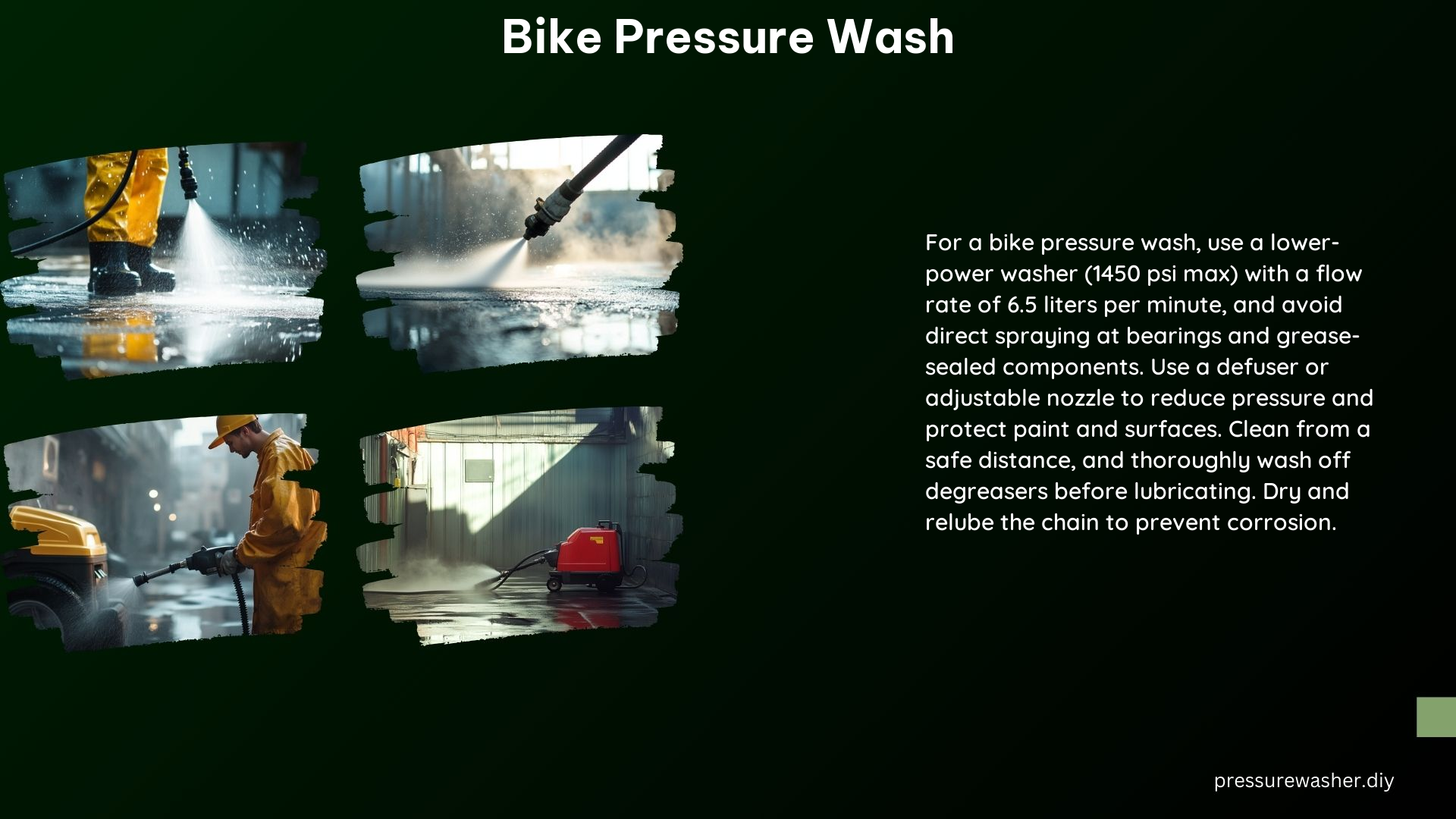Pressure washing your bicycle can be a quick and efficient way to remove stubborn dirt, grime, and debris, but it requires careful consideration to avoid damaging delicate components. This comprehensive guide will provide you with the necessary information to safely and effectively pressure wash your bike, ensuring it remains in top condition.
Pressure Washer Specifications for Bike Cleaning
When it comes to pressure washing your bike, the choice of equipment is crucial. Opt for a pressure washer specifically designed for bicycle maintenance, as these units typically have lower pressure and flow rates to prevent damage to sensitive components.
Muc-Off Pressure Washer
- Flow rate: 6.5 liters per minute
- Maximum pressure: 1450 psi
- Includes three lances, one of which is a low-power head for bikes
Aqua2Go Pro Washer
- Water capacity: 17 liters
- Power source: Internal 110v rechargeable battery
- Adjustable pressure range: 44 psi to 115 psi
- Includes a showerhead and brush with an inline mount for soap or bike wash
Proper Pressure Washing Techniques

Pressure washing your bike requires a delicate touch to avoid damaging sensitive components. Follow these best practices to ensure a safe and effective cleaning process:
-
Avoid Direct Sprays: Do not spray directly at components containing grease, such as the headset, bottom bracket, and hubs, unless using a lower-power pressure washer. Gradually move the nozzle closer to the surface, maintaining a safe distance to prevent forcing water into bearings or disturbing grease.
-
Protect Delicate Components: Remove any vulnerable parts, such as GPS cycle computers, luggage, and bike lights, before pressure washing. Protect leather or absorbent saddles from getting soaked.
-
Thorough Cleaning and Drying: Use a degreaser and thoroughly wash it off before applying lubricant to prevent contamination. Ensure that the chain and other components are completely dry to prevent rust and corrosion.
-
Lubrication and Protection: Apply a high-quality lubricant to the chain and wipe off any excess to prevent contamination. Use protective compounds on the frame to prevent dirt and grime from sticking, making future cleaning easier.
Maintaining Bearing Surfaces and Delicate Components
Bearing surfaces, such as the headset, bottom bracket, and hubs, are particularly vulnerable to water intrusion during pressure washing. Follow these guidelines to protect these critical components:
-
Headset: Avoid spraying directly at the headset bearings. Use a low-pressure nozzle and maintain a safe distance to prevent water from entering the headset.
-
Bottom Bracket: The bottom bracket is another area that requires extra caution. Minimize direct water exposure and use a low-pressure setting to avoid forcing water into the bearings.
-
Hubs: Hubs contain delicate bearings that can be easily damaged by high-pressure water. Avoid spraying directly at the hubs, and use a low-pressure nozzle to clean the surrounding areas.
-
Suspension: If your bike is equipped with suspension components, such as forks or a rear shock, take extra care to avoid direct water exposure. Use a low-pressure setting and maintain a safe distance to prevent water from entering the seals and damaging the internal components.
Lubrication and Protective Compounds
Proper lubrication and the use of protective compounds are essential for maintaining your bike’s performance and longevity after pressure washing.
-
Chain Lubrication: Apply a high-quality chain lubricant after pressure washing and wipe off any excess to prevent contamination.
-
Bearing Lubrication: If you suspect that water has entered the bearing surfaces, disassemble and re-grease the components to ensure proper function and prevent corrosion.
-
Protective Compounds: Apply a protective compound, such as a frame sealant or wax, to the bike’s frame and components. This will help prevent dirt and grime from sticking, making future cleaning easier.
Conclusion
Pressure washing your bike can be a highly effective way to keep it clean and well-maintained, but it requires a delicate touch and attention to detail. By following the guidelines and best practices outlined in this comprehensive guide, you can safely and effectively pressure wash your bike, ensuring its components remain in top condition for years to come.
References
- Cycling Weekly. (2023, November 20). Should you clean your bike like a ‘pro’ – and use a pressure washer? Retrieved from https://www.cyclingweekly.com/products/should-you-clean-your-bike-like-a-pro-and-use-a-pressure-washer
- Reddit. (2022, April 18). Not exactly bike, but bike cleaning. Is a 1200psi pressure washer too much? Retrieved from https://www.reddit.com/r/bikewrench/comments/u6e7vu/not_exactly_bike_but_bike_cleaning_is_a_1200psi/
- Cycling News. (2023, March 31). Best pressure washers: the best post-ride bike cleaners tested. Retrieved from https://www.cyclingnews.com/features/best-pressure-washers-for-cleaning-your-bike/
- BikeRadar. (2022, January 20). How to pressure wash a bike safely. Retrieved from https://www.bikeradar.com/advice/workshop/how-to-pressure-wash-a-bike
- Muc-Off. (n.d.). Pressure Washer Range. Retrieved from https://us.muc-off.com/collections/pressure-washer-range
